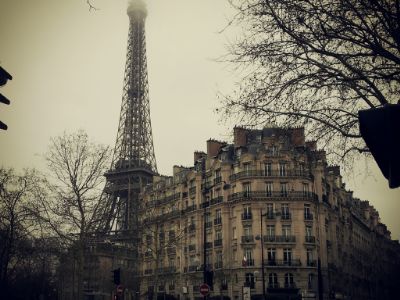The CSS object-fit property is used to specify how an <img> or <video> should be resized to fit its container.
Browser Support
The numbers in the table specify the first browser version that fully supports the property.
| Property | | | | | |
|---|
| object-fit | 31.0 | 16.0 | 36.0 | 7.1 | 19.0 |
The CSS object-fit Property
The CSS object-fit property is used to specify how an <img> or <video> should be resized to fit its container.
This property tells the content to fill the container in a variety of ways; such as "preserve that aspect ratio" or "stretch up and take up as much space as possible".
Look at the following image from Paris, which is 400x300 pixels:

However, if we style the image above to be 200x400 pixels, it will look like this:

We see that the image is being squeezed to fit the container of 200x400 pixels, and its original aspect ratio is destroyed.
If we use object-fit: cover; it will cut off the sides of the image, preserving the aspect ratio, and also filling in the space, like this:

Another Example
Here we have two images and we want them to fill the width of 50% of the browser window and 100% of the height.
In the following example we do NOT use object-fit, so when we resize the browser window, the aspect ratio of the images will be destroyed:
In the next example, we use object-fit: cover;, so when we resize the browser window, the aspect ratio of the images is preserved:
All Values of The CSS object-fit Property
The object-fit property can have the following values:
fill - This is default. The replaced content is sized to fill the element's content box. If necessary, the object will be stretched or squished to fitcontain - The replaced content is scaled to maintain its aspect ratio while fitting within the element's content boxcover - The replaced content is sized to maintain its aspect ratio while filling the element's entire content box. The object will be clipped to fitnone - The replaced content is not resizedscale-down - The content is sized as if none or contain were specified (would result in a smaller concrete object size)
The following example demonstrates all the possible values of the object-fit property:
Example
.fill {object-fit: fill;}
.contain {object-fit: contain;}
.cover {object-fit: cover;}
.scale-down {object-fit: scale-down;}
.none {object-fit: none;}
Try it Yourself »


